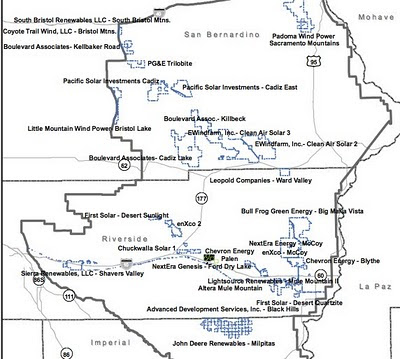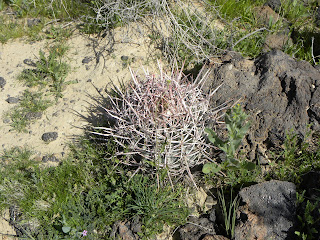Calico Solar Avoiding Responsibility for Environmental Damage?
In a document submitted by Calico Solar LLC (Tessera Solar and Stirling Energy), the company proposes weakening conditions proposed by the California Energy Commission (CEC) requiring it to conserve nearby Mojave Desert wilderness to compensate for the loss of endangered species. The proposed Calico Solar power project would displace or kill at least 100 desert tortoises currently located on the site, in addition to several other special status species, including desert kit fox, burrowing owl and foxtail cactus. In the original conditions proposed by the CEC Staff, Calico Solar would have to purchase and conserve 14,018 acres of desert tortoise habitat elsewhere in the Mojave to make up for the loss of wildlife and habitat on the proposed site. However, in the document submitted by Tessera Solar and Calico Solar LLC, the company lowers the acreage for which it is responsible to 11,658 acres on "BIO-17", which is the designation for the condition requiring the company...







